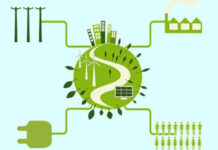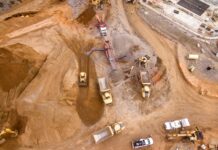
“The idea consists in combining the need of heating of greenhouses with installing a hypothetical biomass boiler” explains Canale Energia Marco Capelof Florveneto, “by examining the its cost-efficiency to decide when to switch to the heat production with wood pellet.” The assessment derives from the possibility of the agricultural company to produce wood pellet in-house, on its own land or in the neighboring areas. Thus the project included a phase of analysis, which was completed recently, conducted by AIEL, the talian Agroforestry Energy Association. “Our sample comprised ten local companies which had different size and needs” explains Massimo Negrin, Ph.D., in charge of the group of professional biomass producers at AIEL,“considering the current costs of the locally produced wood pellet, and of oil – on the global scale – applied for at least 1,400 hours a year, we have estimated as an investment threshold the plants of more than 150-500kW”.
Moreover, considering the environmental impact on the externality of the overall costs, oil with its global supply costs appears to have a higher impact on the environment than wood pellet in the local production chain. Thus the advantage depends on the hours of actual use and the plant capacity.
In the case of small-sized structures powered by methane the replacement will not be cost-effective even if we consider the incentives, whereas already from 150 kW the investment will return in 5-6 years. The higher the capacity and the number of hours of operation in a year, the higher the economic performance indexes and the return time. Another variable is the efficiency of the diffusion plant and heating maintenance. “Such value is approximate”– continues Negrin – “we considered as fixed variables the cost of energy resources in the market and the operation hours per capacity, but actually each plant has to be carefully assessed in its entirety.”.
When it comes to the emissions of particulate matter and other substances, it is crucial that the assessment encompass not only the source of energy, but also the state of maintenance and the technology applied: “A correct machine-fuel combination makes it possible to reach also lower levels than 10 mg of PM per cubic meter, whereas in the case of plants of less than 500kW it is necessary to use a fuel by means of a standard a1 or a2 technology which allows obtaining certified emission levels.”.
All in all, the possibilities to contaminate less in the process of production are in place, but they should be carefully examined on the basis of the technologies and the overall economic impact. It is worth reminding that the incentives available are granted only for boilers equipped with plants the performance of which is higher than the limits established by law.
Per ricevere quotidianamente i nostri aggiornamenti su energia e transizione ecologica, basta iscriversi alla nostra newsletter gratuita
e riproduzione totale o parziale in qualunque formato degli articoli presenti sul sito.



















